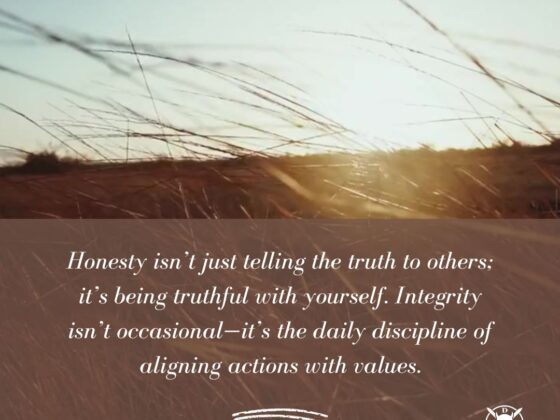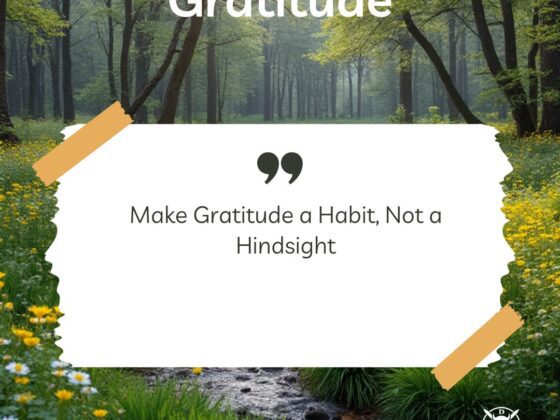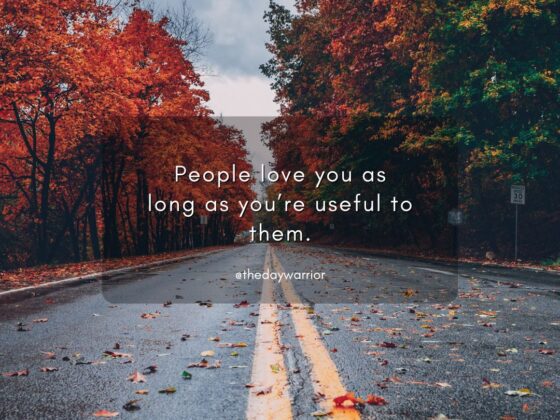“If you can get 1% better each day for one year, you’ll end up 37 times better by the time you’re done.” – James Clear
I highlight this all the time in my newsletters and X posts.
What does it mean to get better every day?
If you get 1% better every day, over time, this will add up, and you will be able to measure some level of success towards achieving your goals.
In my newsletter, Systems vs Goals, I dive deep into the importance of these two items.
Goals are the desired outcomes we aim to achieve. Goals are the destinations of dreams we want to reach. They are specific, measurable, and time-bound. For example, “Losing 20 pounds in three months,” “Write and publish a book by the end of the year,” or “Save $10,000 by next December.”
Goals are tangible, time-sensitive, and measurable. They are designed to give you a finish line to cross.
On the other hand, Systems are the vehicles that get you there. They are the “how”- consistent habits, processes, and routines that drive daily progress and lead to the desired outcomes.
Instead of focusing on the finish line, systems focus on the journey: eating a balanced diet, exercising daily, or setting aside 30 minutes daily for reading and writing.
Getting Better 1% Every Day
What does it mean to get 1% better every day?
The power of getting 1% better each day lies in the concept of compound growth—small, consistent improvements that accumulate over time to create remarkable results.
Here’s why it’s transformative:
- Exponential Growth. At first, when we try to improve by just 1% each day, it might seem insignificant, but over a year, these small gains are compounded. By the end of the year, you could be nearly 37 times better than when you started. Track your progress and make it visible so you can see the value that investing in 1% improvements each day makes in your personal and professional life.
- Builds Momentum. Motivation is an emotion, but it is not very dependable. Building habits and systems that create small wins is a more predictable method of building confidence and motivation. Progress or wins create momentum each day.
A Few Examples
Reading 10 pages a Day equals roughly 12-18 books a year. That translates to approximately a book a month. How many of you struggle to sit down and read a book? That book, whether 50, 100, or even 200 pages, often feels like an impossible task to accomplish. Reading one book for some is a challenging task. Reading twelve books in a year feels like a mission impossible.
Suppose you break this scary task of reading 12 or more books in a year to just 10 pages a day. Suddenly, the small wins can come easier. Each day you read 10 pages turns into a small win. Seven days turns into a week. Four weeks turn into a month, and 30 days of small wins turn into medium-sized win; you have completed a book and increased your knowledge, which you can start to apply to building new skills and experiences.
Walking 30 minutes after each meal. Having a goal to lose weight can feel overwhelming. A weight loss journey’s daily ups and downs can be very frustrating. Many of us can quickly lose a pound or two, only to regain the weight over the next few days. How many of us have met our short-term goal of losing 10 to 20 pounds only to rebound and gain it all back?
How do you reframe the idea of losing weight into positive habits you will improve daily, leading to a healthier weight over time?
The average person can walk about 3500 steps for each 30-minute walk. What if you start by walking 30 minutes each day after one of your meals? Think of all the daily wins this can lead to. Did you realize that 30 minutes of walking daily will lead to approximately 1,277,500 steps in one year?
Doing this will transform the negative, and mostly demotivating, weight loss experience into daily motivating wins that accomplish your walking goals. This positive habit is easy to maintain and has many health benefits, such as improved digestion, blood sugar management, heart health, weight management, better sleep, and increased circulation.
It is also a perfect activity to test getting better every day. Start with 30 minutes after one meal, then add 30 minutes after meal two, and finally add 30 minutes after meal three. Do you know what this leads to? Approximately 3,832,500 steps a year! That translated roughly to 1800 miles. Walking 30 minutes daily would allow you to complete Spain’s Camino de Santiago pilgrimage route.
Save $5 every day. Good money management is an excellent opportunity to get better every day. It is easy to measure and track and is one of the most essential life skills we can teach our kids. If you save $5 a day, this would be $1,825 in savings by the end of the year. This is enough for a short holiday, a new laptop, or a rainy day fund. Another great option is to take that money and introduce your kids to the wonderful world of index funds. Investing $5 a day for 45 years in an index fund with a 10% annual return would result in a future value of $1,376,000. Your kids would be millionaires in their forties if they learned this skill from you. Their learning experience will be even better if they observe you practicing this real-life skill.
Documenting one small win daily. All of us need to journal more and celebrate our wins more. Keeping a journal is foundational to figuring out where you are, where you’re going, and how to stay on course. It’s not just writing—it’s an active step toward building a better version of yourself. Writing in a journal daily and reflecting on what you are thankful for can benefit your mental health and overall well-being. Ensure you focus on what you are grateful for. Do not forget those small wins. If you only remember one from this article, the key to personal growth is not just focusing on what is wrong. You must also appreciate your accomplishments and take proactive and consistent steps toward your goals. Practice gratitude for what you have daily. Recording this daily for one year creates a powerful record of your progress. Something to continuously learn from and celebrate your progress.
Learning One New Skill Every Week
There is a power in combining complementary skills to create unique advantages. Instead of striving to be the best at one thing, consider the importance of becoming “good enough” in multiple areas to amplify your overall value and opportunities for success.
A skill stack allows you to combine abilities to magnify your value. For example, being a good communicator and having technical expertise can make you an invaluable asset in many industries.
A diverse skill stack prepares you to adapt to various situations and challenges, making you more resilient in an ever-changing world.
Few people have the exact combination of skills you do, which can set you apart and make you more competitive in your field. You don’t need to be the best at any one skill.
Being above average in multiple skills is often more practical and achievable, yet it can make you highly effective and successful.
By intentionally cultivating and combining skills, you create a unique profile that opens doors to opportunities and positions you for success in ways that a single skill alone might not.
Using the power of getting a little better every day and adding one new skill each week for one year would result in fifty-two new skills, which could include soft or hard skills.
Hard skills are specific, teachable, and measurable abilities or knowledge that are often job-specific. They are acquired through formal education, training, or hands-on experience. Some examples of hard skills include coding (e.g., Python, Java), data analysis, graphic design, accounting, proficiency in foreign languages (e.g., Japanese, Chinese, Spanish), and technical certifications. They learn these skills through structured courses, programs, workshops, or practice. You can then measure your success in adding new hard skills using tests, certifications, or demonstrated performance.
On the other hand, soft skills are interpersonal and behavioral skills that influence how you interact with others and navigate the workplace or that remarkable journey we call life. They are more challenging to learn and measure but are critical for effective communication, teamwork, leadership, and execution. Soft skills include communication, emotional intelligence, problem-solving, leadership, time management, adaptability, and resilience. While you will see online courses that claim to help you master these skills, most learning comes from personal experience, self-reflection, mentorship, or feedback from people you trust. They are very difficult to measure and are often evaluated through observation, feedback, or subjective judgment.
Hard skills often represent the technical expertise needed to perform tasks or solve problems. Soft skills enable you to apply hard skills effectively, work well with others, and adapt to challenges.
A real-world example of this could be a software developer. A hard skill would be a software developer proficient in Python (to build and debug code). A soft skill would be his ability to communicate (explain) the technical aspects to non-technical team members).
When stacking skills, a combination of hard and soft skills ensures versatility and maximizes your value in any context.
By learning one new skill each week, you’re not just expanding your knowledge base but creating a unique and powerful skill stack. This combination of abilities can set you apart personally and professionally, making you more adaptable, valuable, and resilient in an ever-changing world.
Imagine the impact of adding 52 new skills to your repertoire over a year. Each skill, whether big or small, contributes to your overall growth and potential. It’s not about mastery in every area but about being “good enough” in multiple areas to create unique advantages.
Wrap Up
I encourage you to embrace the power of small, daily improvements. Remember that significant change doesn’t happen overnight, whether in your personal or professional life. It’s the result of consistent, incremental progress.
By focusing on getting 1% better each day, you’re not just working towards your goals but building a lifestyle of continuous growth and improvement. And that is the true path to lasting success and fulfillment.
Here’s to your journey of daily improvement and exponential growth!
The Day Warrior
How to find more content from The Day Warrior:
If you enjoyed this newsletter, please subscribe.
If you want to provide feedback, please take The Day Warrior Survey.
If you want to have a deeper discussion about this subject, please get in touch with The Day Warrior.
Follow me on X for daily short and long-form content: @thedaywarrior.
My LinkedIn information is here: https://www.linkedin.com/in/the-day-warrior/
I am also on Instagram: @thedaywarrior.
My website is http:/thedaywarrior.com.
“Never blindly accept what you read online. Always challenge it with an open and critical mind.” – The Day Warrior










